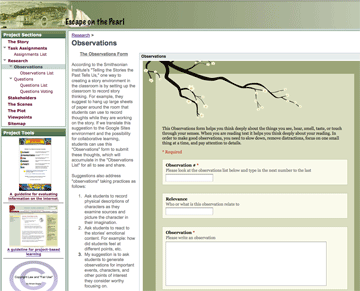
One of the major stumbling blocks that students face when conducting research is how to construct meaning from what they read. Research usually starts with a question or topic that the teacher has assigned or the student is curious about. In most cases,the students use a search engine to look up as many sources as possible for their research. Students often use advanced search to filter research results to fit their exact topic or age level. As they identify their sources,they usually store research results in a web-based research management tool such as Diigo or Zotero. As complex as this may seem,students as young as 8 years old perform this process almost flawlessly. The problem usually starts when they open a piece of text and start reading what it says. When students get to this stage,I can almost see the wall that is formed between the student and the text. They seem mostly lost. Why is it so difficult to read text,understand what it says,and identify the things that relate to the students’goals? Of course,the entire process is not simple. It requires students to be good readers,have a good vocabulary,comprehend the meaning of those words in context,identify important ideas and how they relate to one’s topic. Even students whose vocabulary and comprehension levels are that of typical students of the same grade-levels,
tend to stumble when it comes to identifying relevant ideas pertaining to topics they are researching.
These were my thoughts as I designed the ‘Observations’ tool. The tool, which was created with Google Forms, includes two fields:Relevance and Observation. Relevance is described as ‘Who or What is this observation relate to,’and ‘Observation’ is the observation itself. As students read text, they need to focus on sentences that are important to their goal, rephrase them, and write them as observations using the ‘Observations’ form. Observations are fed in one at a time. When the student presses the ‘Submit’ button, the observation is listed on the spreadsheet attached to the form. Soon, a whole list of observations accumulates and becomes available for students to use in their projects.
This type of note-taking has great individual, as well as group, benefits. As an individual, a student can always go back to the Observations List and recall, add new, or correct observations he/she made. As a group, students can look at other students’ observations to learn from, get new ideas, or use as a foundation for brainstorming with group members. The tool is also valuable for evaluation purposes. By going through student observations, teachers can understand the foundation that students based their ideas upon. As its name indicates, the ‘Observations’ tool helps students make observations, which implies that it was not designed specifically for text. Depending on the type of project students are engaged in, they may be required to use different senses to make observations. In a science project, students may different phenomena very carefully or even tinker with apparatus and write observations about what they see, feel, smell, taste or touch. In a storytelling scenario, students are encouraged to record their thoughts as they reflect descriptions of characters, events, and students’ emotional reactions to a story. In all types of projects, the observation tool can help students focus their thinking on what they need to know, reflect back on, and build a knowledge foundation that students can collaborate and brainstorm with.
